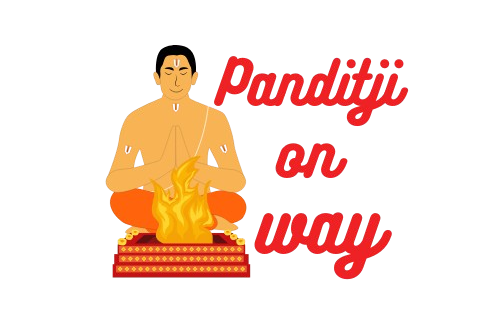Difference Among Various Shraddha Types | Nitya, Naimittika, Kamya, Vriddhi & Parvana
Discover the Various Shraddha Types:- There are 5 types of Shraddha – Nitya, Naimittika, Kamya, Vriddhi & Parvana. Learn their significance, rituals & book Pandit online at Panditjionway.com. Shraddha is one of the most important rituals in Sanatan Dharma, performed to honor and offer gratitude to ancestors (Pitru). According to scriptures like the Matsya Purana and Yama Smriti, Shraddha is classified into different categories depending on purpose, timing, and tradition.
In Sanatan Dharma, Shraddha is considered one of the most sacred rituals. It is an act of devotion, gratitude, and duty towards our ancestors (Pitru). The word Shraddha comes from “Shraddha + Anushthan,” which means performing rituals with complete faith and devotion. By performing Shraddha, one ensures peace for the departed souls and also receives their blessings for prosperity, health, and happiness.
According to Matsya Purana and Yama Smriti, Shraddha is divided into various types based on time, occasion, and purpose. While Matsya Purana describes three main categories, Yama Smriti expands it into five. Understanding these differences helps devotees perform the right Shraddha at the right time.
Below, we explain the five important types of Shraddha in detail.

1. Nitya Shraddha (नित्य श्राद्ध)
- Meaning: Nitya Shraddha is the daily offering performed for ancestors.
- Unique Feature: Vishwadeva are not installed during this ritual.
- Flexibility: If one cannot perform the full ritual due to urgency, Shraddha can be done with only water.
- Purpose: It maintains a daily spiritual connection with the ancestors and ensures their blessings.
Daily remembrance of Pitru through Nitya Shraddha is believed to remove obstacles and give inner peace.
2. Naimittika Shraddha (नैमित्तिक श्राद्ध)
- Also Known As: Ekodishta Shraddha or Varshika Shraddha.
- Meaning: Performed for one specific person, usually on their death anniversary (Tithi).
- Occasions:
- Immediately after the death of a person.
- Annually on their Hindu death Tithi.
- On Bhishma Ashtami, devotees perform Ekodishta Shraddha for Pitamah Bhishma.
- Note: Vishwadeva are not installed during this ritual.
This Shraddha ensures peace for the soul of the deceased and strengthens the bond between family members and ancestors.
3. Kamya Shraddha (काम्य श्राद्ध)
- Meaning: Performed to fulfill special wishes or desires.
- Occasions: Conducted during specific Nakshatras such as Rohini or Krittika.
- Purpose: People perform this Shraddha to seek prosperity, victory in ventures, success in examinations, health, or overall well-being.
Kamya Shraddha is considered highly beneficial for those who seek both material and spiritual growth.
4. Vriddhi Shraddha (वृद्धि श्राद्ध)
- Also Known As: Nandi Shraddha.
- Occasions:
- During auspicious ceremonies like marriage.
- On the birth of a boy child.
- Purpose: To receive the blessings of ancestors before starting any new journey or responsibility in life.
By performing Vriddhi Shraddha, families invite good fortune and divine protection from their Pitru.
5. Parvana Shraddha (पार्वण श्राद्ध)
- Meaning: Performed on special occasions and is considered the most significant type of Shraddha.
- Occasions:
- Pitru Paksha (Mahalaya Paksha) – the 15-day period dedicated to ancestors.
- Bhadrapada Purnima.
- Unique Feature: Vishwadeva are installed during this ritual.
- Purpose: It is believed that Parvana Shraddha offers maximum benefit and ensures satisfaction for all ancestors.
During Pitru Paksha, millions of Hindus perform Parvana Shraddha with devotion, as it is believed to help ancestors attain moksha.
Importance of Performing Shraddha
- Brings peace and salvation to departed souls.
- Removes Pitru Dosha from the family’s horoscope.
- Ensures prosperity, health, and happiness in the household.
- Strengthens the spiritual bond between present and past generations.
- Gains blessings of ancestors for success in life.
FAQs on Types of Shraddha in Hinduism
Q1. What are the different types of Shraddha in Hinduism?
👉 According to Matsya Purana and Yama Smriti, there are five main types of Shraddha – Nitya Shraddha, Naimittika Shraddha (Ekodishta), Kamya Shraddha, Vriddhi Shraddha (Nandi), and Parvana Shraddha. Each type has its own purpose and occasion.
Q2. Which Shraddha should be performed daily?
👉 Nitya Shraddha is the daily Shraddha ritual. It can even be performed with water alone if full rituals are not possible. Performing this daily ensures regular blessings from ancestors.
Q3. What is the difference between Naimittika Shraddha and Parvana Shraddha?
👉 Naimittika Shraddha (Ekodishta) is performed for one specific ancestor, usually on their death anniversary, while Parvana Shraddha is performed collectively for all ancestors, especially during Pitru Paksha and Bhadrapada Purnima.
Q4. Which Shraddha is performed to fulfill wishes and desires?
👉 Kamya Shraddha is done to fulfill specific wishes such as health, prosperity, career success, or victory in life. It is usually performed under certain Nakshatras like Rohini and Krittika.
Q5. What is Vriddhi Shraddha and when is it performed?
👉 Vriddhi Shraddha (Nandi Shraddha) is performed during auspicious occasions such as a marriage ceremony or on the birth of a boy child, to seek the blessings of ancestors before starting new responsibilities in life.
Q6. Why is Parvana Shraddha important during Pitru Paksha?
👉 Parvana Shraddha is considered the most important type of Shraddha during Pitru Paksha. It is believed that performing Parvana Shraddha helps in removing Pitru Dosha and grants peace and moksha to ancestors, while bringing prosperity to the family.
Q7. Can Shraddha be performed without a Pandit?
👉 While Shraddha can be performed at home with devotion, it is highly recommended to perform it under the guidance of a qualified Pandit who knows the correct mantras and procedures. You can easily book a Pandit for Shraddha Puja online for proper rituals.
Q8. What happens if Shraddha is not performed for ancestors?
👉 If Shraddha is not performed, it is believed that ancestors may not attain peace, leading to Pitru Dosha in the family. This may cause obstacles in health, marriage, finances, and career. Regular Shraddha ensures blessings and removes such obstacles.
Conclusion
Each type of Shraddha serves a different spiritual purpose. From daily remembrance through Nitya Shraddha to the highly significant Parvana Shraddha during Pitru Paksha, these rituals are essential for maintaining harmony between the living and departed souls.
If you want to perform Shraddha, Pitru Paksha rituals, or any Vedic Puja, you can easily Book Pandit for Shraddha Puja Online through PanditjiOnWay – India’s most trusted platform for Hindu rituals and astrology services.
Read More:- Pandit For Pitru Paksh Shradh Puja


